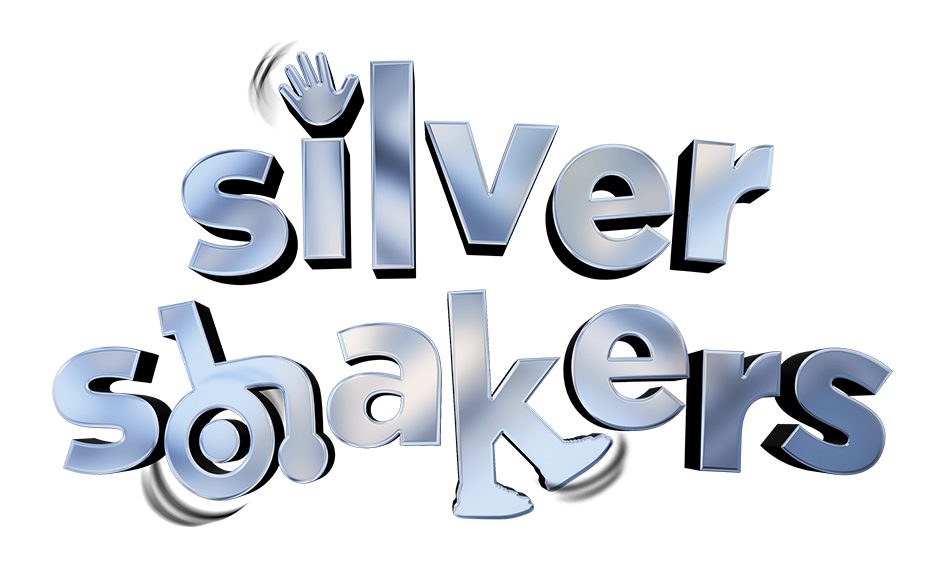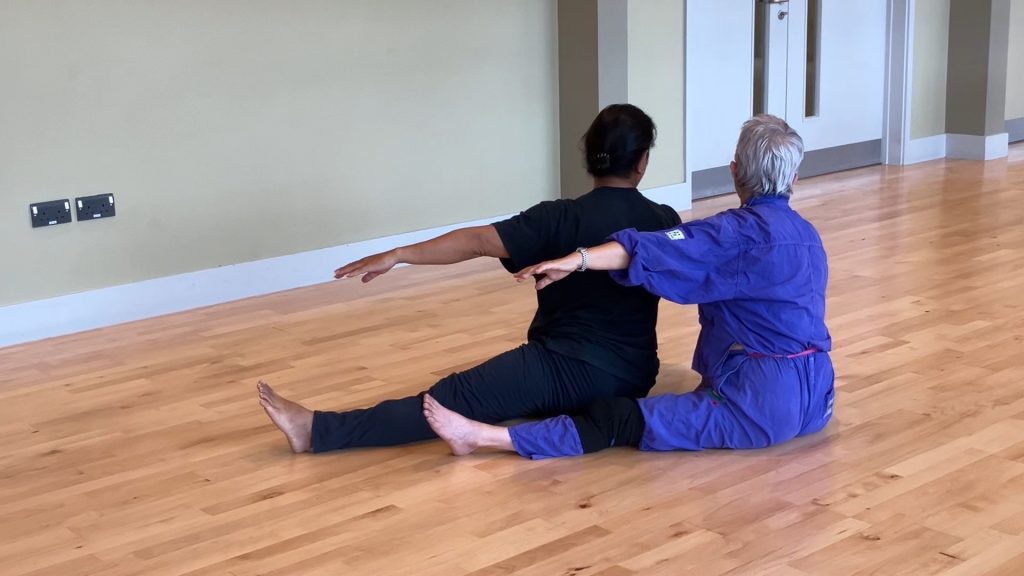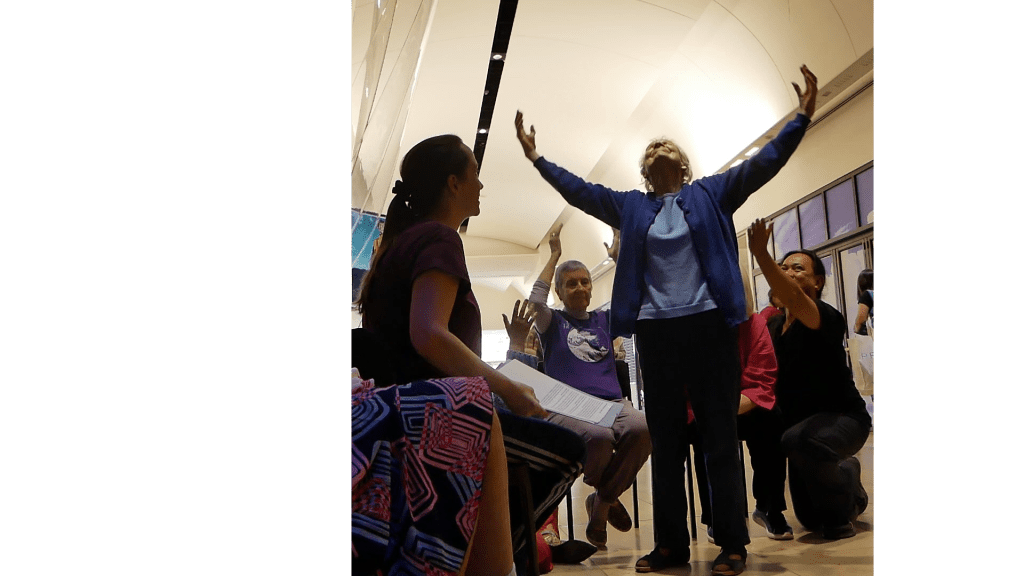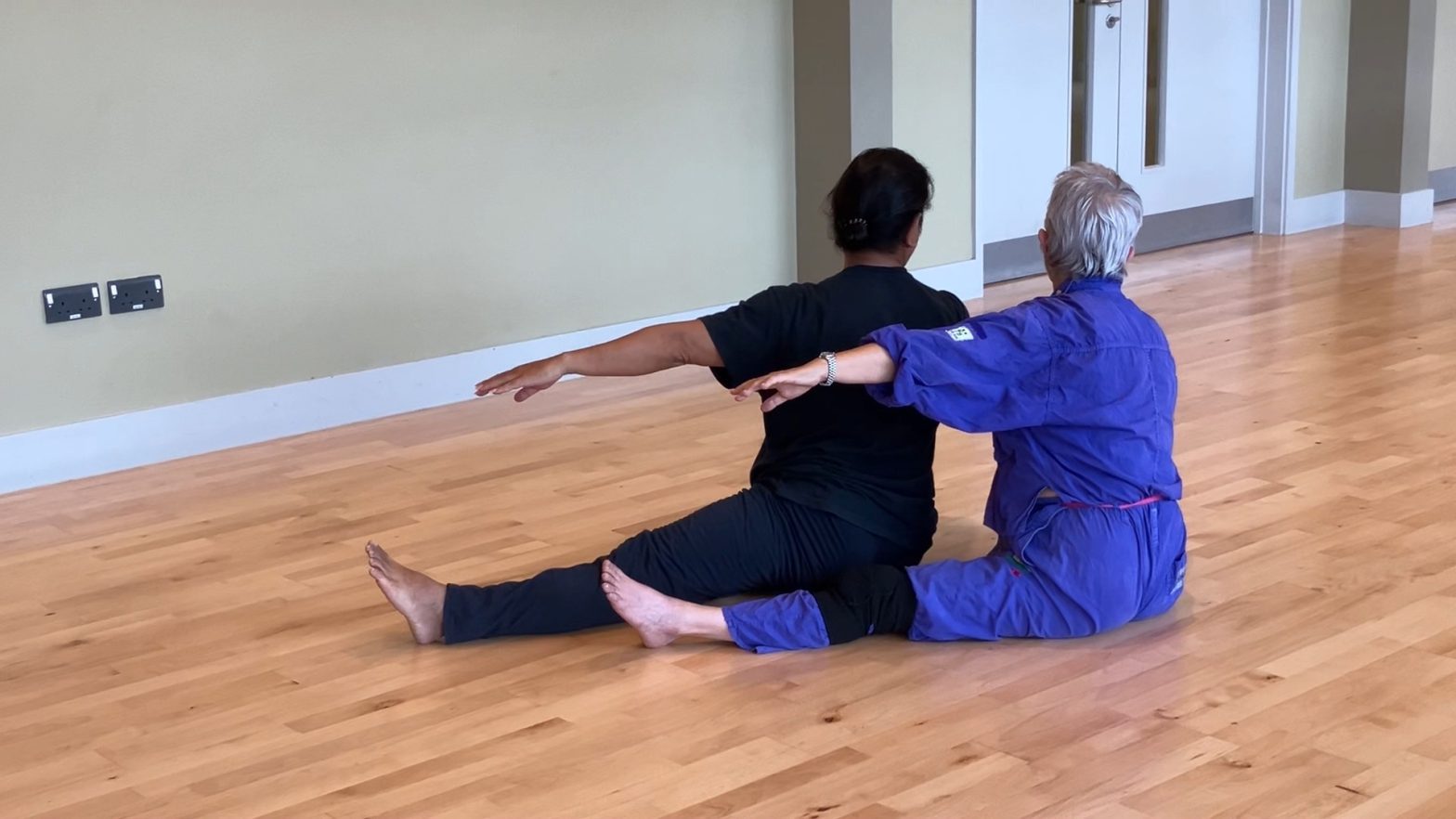Jane Castree reflects on her work with Bullingdon Community Centre’s Silver Shakers, and how movement can help us to embody art, feeling it with our entire bodies. This piece of writing was commissioned as part of Situated Ecologies, our summer off-site programme.
Partnering with Modern Art Oxford has been a fantastic opportunity for the Silver Shakers group to continue their dance classes over the summer period. This has enabled them to continue benefiting physically, as well as ensuring that the community spirit and social aspect of the group continue to flourish. It has also given us space to delve into choreographic practices and concepts in four key areas.
Listening Through Touch
Listening through touch is a way of generating movement material spontaneously, through interaction with other people or your environment. We began with a light-hearted activity in which participants familiarised themselves with the power of bodily autonomy, starting with giving and withholding consent to the simple act of shaking hands. We developed this into duets in which participants moved in and out of contact with one another, while responding to each other’s movements.

Moving from Images
In this session, we shared still images such as photography and artworks for inspiration. We then discussed what we saw in the images, such as colours, movement, characters and the sense of energy or mood being conveyed. The participants used these characteristics to generate movements, which they performed with qualities – for example: bouncy, soft, sharp etc – which expressed what connected with them from the image.

Objects of Memory
We used objects as catalysts to create movement in two ways. First, we took a phenomenological approach in which we looked at properties such as the colour of the object, the texture and if and how it moves – while disregarding what utility or function it may have. Secondly, we delved into what memories the object ignited in us. For example, looking at a bunch of keys, you might remember a time you dropped your keys down a drain. Reflecting on that moment, you might find you can remember a surprising amount of detail: the sound the keys made as they fell into the water, the feeling of heavy shopping bags reminding you that the food inside is defrosting, the bemusement on faces of passersby as they see you staring forlornly down a drain. We combined both these aspects by verbally recounting the story, while physicalising the object’s properties.
Embodying Concepts

The themes that emerged during Situated Ecologies were:
- The idiosyncrasies in the ways we remember. For example, some of us may have very strong memories associated with food or smell, while struggling to remember information based on everyday tasks.
- Aging and ageism. We discussed perceptions of older people in society, and the participants shared their authentic experiences of aging.
- Ideas of who is seen or unseen, acknowledged or ignored. As a group, we discussed the ways in which our everyday experiences can be interrupted or sabotaged, when others express their perceptions, expectations and prejudices.
- Collective memory or erasure of epic lives and achievements. We discussed systemic factors influencing the groups and individuals a society decides to remember, and how.
For the movement tableau we created from the final concept, we chose four figures – Sister Maddona Buder, Elizabeth Freeman, Rosalind Franklin and Natalie Levant – who we felt weren’t being celebrated enough. While a central performer responded in slow-motion to a script read aloud about a figure’s life, the other dancers physically supported and reinforced their movements. This demonstrated the support we want to lend to their stories.
This piece was co-written with Support Worker, Joe Attlee.
